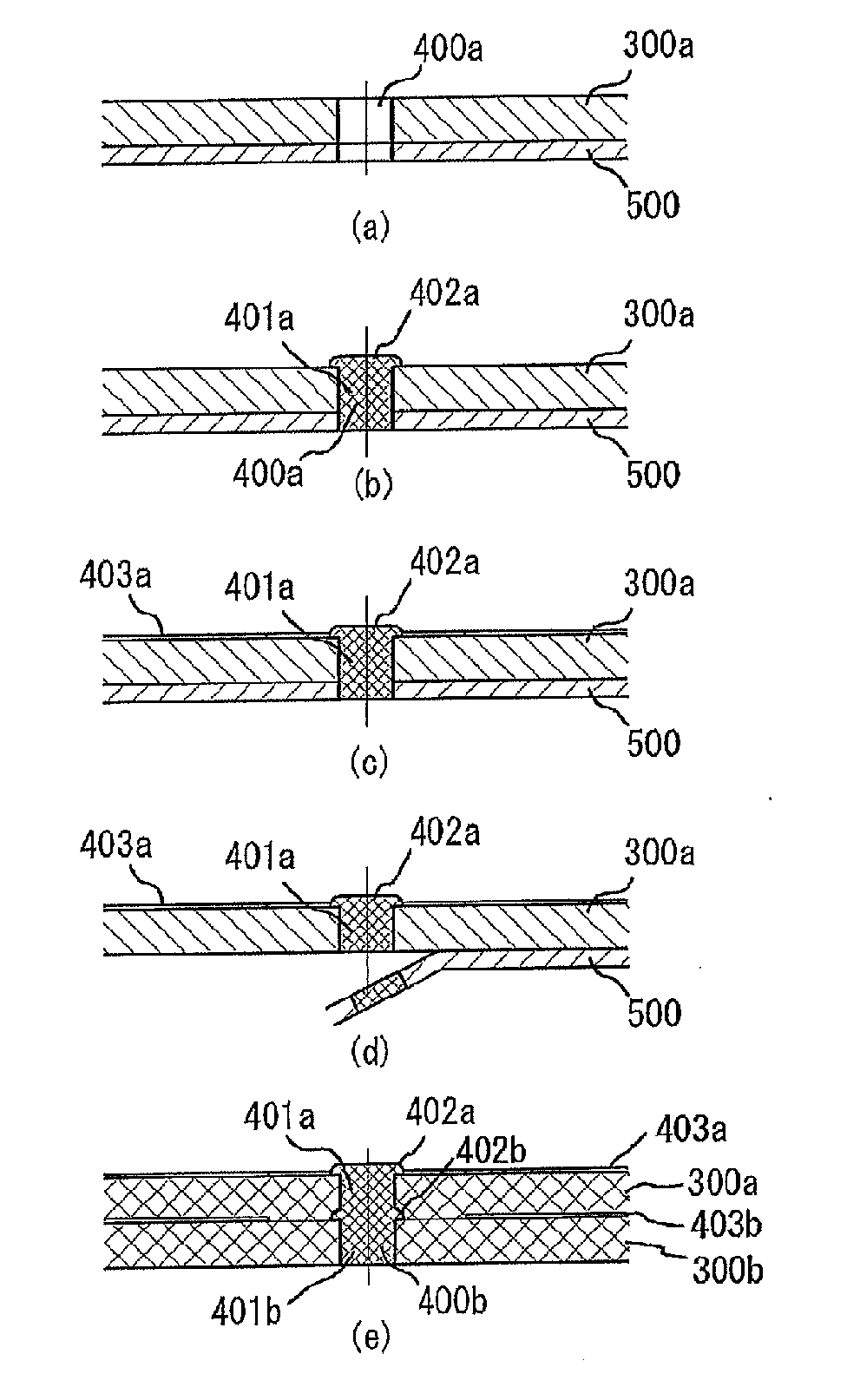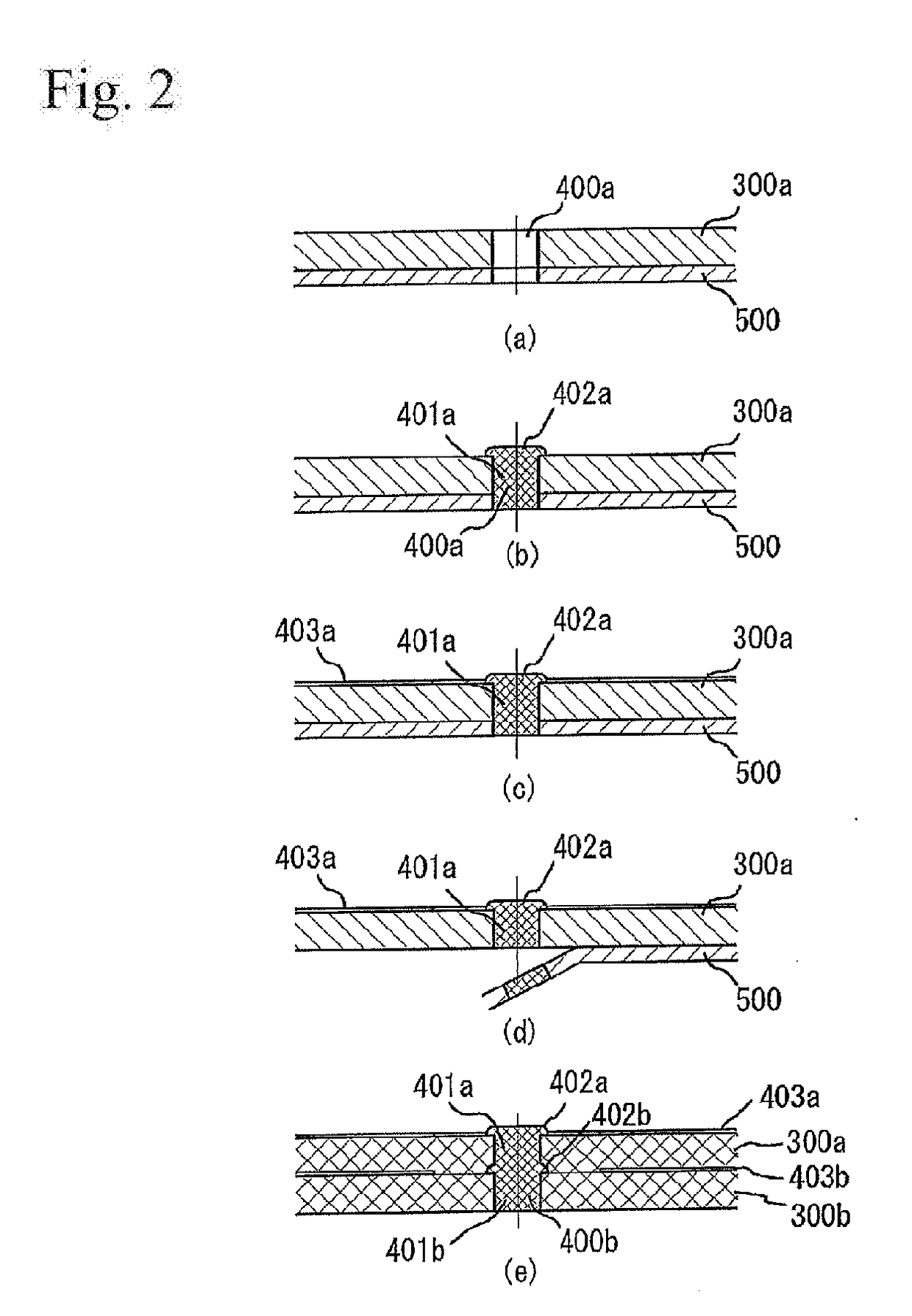Method for producing dielectric ceramic, and dielectric ceramic
a technology of dielectric ceramics and dielectric ceramics, applied in ceramics, inorganic insulators, ceramic layered products, etc., can solve the problems of low-resistance wiring of metal components, damage to firing-furnace materials, etc., and achieve the effect of reducing the variation of shrinkage factor, reducing the microstructure, and easy uneven shrinkage factor
- Summary
- Abstract
- Description
- Claims
- Application Information
AI Technical Summary
Benefits of technology
Problems solved by technology
Method used
Image
Examples
example 1
[0105]In accordance with the flowchart in FIG. 1, a dielectric ceramic was produced. [0091]
(Preparation of Cordierite Material (A Material))
[0106]As an A material, the following was used: a commercially available cordierite material (composition: 2MgO.2Al2O3.5SiO2; purity: 97.5%; median diameter D50: 1.65 μm, and BET: 6.3 m2 / g.
(Production of Low-Temperature-Sintering Material (B Material))
[0107]Raw materials as shown in Table 1 shown below were used as raw materials of a low-temperature-sintering material. These materials were weighed to have a composition shown in Table 2 and give a total weight of 50 kg.
TABLE 1Raw materialsPurity (%)Median dimeter D50 (μm)BET (m2 / g)Al2O399.90.556.5SiO295.4—41.5SrCO399.50.427.50Bi2O399.20.832.38K2CO399.9—0.36Na2CO399.5—1.92CuO99.54.800.75Mn3O491.0—20.3
TABLE 2Main components(100 parts by mass)Secondary componentsAl2O3SiO2SrCO3Bi2O3Na2CO3K2CO3CuOMn3O4(parts by(parts by(parts by(parts by(parts by(parts by(part by(part bymass)mass)mass)mass)mass)mass)m...
example 2
[0119]In the same way as in Example 1 except the ratio by content between the low-temperature-sintering material (B material) and the cordierite material (A material), mixed powdery particles were yielded (72.5% by mass of the low-temperature-sintering material (B material) and 27.5% by mass of the cordierite material (A material)). A slurry of the mixed powdery particles was taken out. To 100 parts by mass of the slurry were initially added 7 parts by mass of a plasticizer (DOP), and then thereto were added 10 parts by mass of a binder (PVB). The materials were stirred and dispersed (at a rotating number of 270 rpm). Furthermore, the resultant was vacuum-degassed to be defoamed. In this way, entrained air, the organic solvent and other volatile components were evaporated to make the resultant into a slurry state that the viscosity was adjusted to 8500 cP. A doctor blade method was used to shape the defoamed slurry into a ceramic green sheet having a shaping thickness of 150 μm at a...
examples 3 and 4
[0123]A dielectric ceramic of Example 3 was yielded in the same way as in Example 2 except the use of the mixed powdery particles produced in Example 1 (70.0% by mass of the low-temperature-sintering material (B material) and 30.0% by mass of the cordierite material (A material)). Moreover, a dielectric ceramic of Example 4 was yielded in the same way as in Example 2 except the use of mixed powdery particles (67.5% by mass of the low-temperature-sintering material (B material) and 32.5% by mass of the cordierite material (A material)).
Comparative Examples 3, 4, 5 and 6
[0124]A method for producing a dielectric ceramic of each of Comparative Examples 3 to 6 is as shown in a flowchart in FIG. 9. Specifically, in the same way as in Comparative Example 1, a low-temperature-sintering material (B material) was produced. Subsequently, a pulverizing and a drying step were added to the process before the B material was mixed with the cordierite material (A material). In Comparative Example 5,...
PUM
| Property | Measurement | Unit |
|---|---|---|
| median diameter D50 | aaaaa | aaaaa |
| porosity | aaaaa | aaaaa |
| frequency | aaaaa | aaaaa |
Abstract
Description
Claims
Application Information
 Login to View More
Login to View More - R&D
- Intellectual Property
- Life Sciences
- Materials
- Tech Scout
- Unparalleled Data Quality
- Higher Quality Content
- 60% Fewer Hallucinations
Browse by: Latest US Patents, China's latest patents, Technical Efficacy Thesaurus, Application Domain, Technology Topic, Popular Technical Reports.
© 2025 PatSnap. All rights reserved.Legal|Privacy policy|Modern Slavery Act Transparency Statement|Sitemap|About US| Contact US: help@patsnap.com



